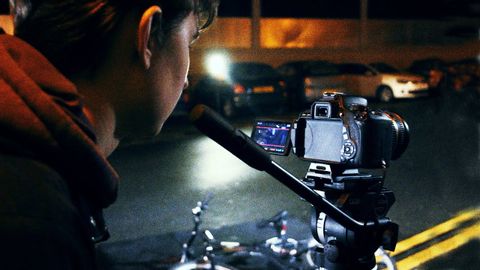如何在低光下拍攝 (How to Shoot in Low Light)
Book Liu 發佈於 2021 年 01 月 14 日  沒有此條件下的單字
沒有此條件下的單字US /ˈstrʌɡəl/
・
UK /'strʌɡl/
- v.t./i.奮鬥;掙扎;打鬥;搏鬥
- n. (c./u.)掙扎;掙扎;奮鬥;難題
US /ˈdisənt/
・
UK /ˈdi:snt/
- adj.正派的; 得體的;正派的;慷慨的;穿著得體的;相當可觀的
US /ˈslaɪtli/
・
UK /ˈslaɪtli/
US /ˈplɛnti/
・
UK /'plentɪ/
- pron.豐富;很多
- n. (u.)大量;充足;很多
- adv.足夠地;充分地
- adj.很多的

